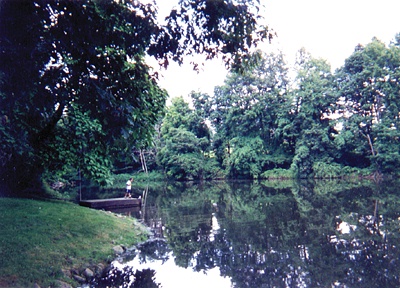All Nonfiction
- Bullying
- Books
- Academic
- Author Interviews
- Celebrity interviews
- College Articles
- College Essays
- Educator of the Year
- Heroes
- Interviews
- Memoir
- Personal Experience
- Sports
- Travel & Culture
All Opinions
- Bullying
- Current Events / Politics
- Discrimination
- Drugs / Alcohol / Smoking
- Entertainment / Celebrities
- Environment
- Love / Relationships
- Movies / Music / TV
- Pop Culture / Trends
- School / College
- Social Issues / Civics
- Spirituality / Religion
- Sports / Hobbies
All Hot Topics
- Bullying
- Community Service
- Environment
- Health
- Letters to the Editor
- Pride & Prejudice
- What Matters
- Back
Summer Guide
- Program Links
- Program Reviews
- Back
College Guide
- College Links
- College Reviews
- College Essays
- College Articles
- Back
Learning to Save a Life
“Save me, save me, someone please help me, I’m drowning!” These words alert lifeguards trained to save lives. While training as a lifeguard, I never thought I would have to save someone’s life. Of course, you see the lifeguards on Bay Watch with the overly dramatic drowning victims and the slow-motion running, with the hair glistening in the sun and the perfect tan shimmering off David Hasselhoff, but that is Hollywood, and it is not reality. Usually drowning victims are hard to hear and see because they are submerged under the water or are unconscious. You never really think that you will actually have to save someone, but I did and I felt completely unprepared.
In lifeguard training, they lecture on how to maintain an eye on swimmers, offer parents tranquility, and train hard to respond in a heartbeat because you only have a minute or two to react before the drowning victim goes unconscious. In training, they teach you how to respond in an emergency, but they never truly instruct on how to save a life. The primary responsibility of a lifeguard is to ensure patron safety and protect lives, but notice they never depict how to actually save a life in a multi-step process.
My only experience with a drowning victim was at a summer camp. I was the lifeguard at the lake, which was murky and stretched for miles and miles, but the children loved it. They spent entire afternoons swimming, jumping, diving, and relieving themselves from the heat. One day, despite the chilly weather, the children wanted to swim in the lake. So, since I was the only lifeguard on duty I watched the kids as they played in the lake.
As a neophyte to lifeguarding, I did not notice the boy sinking until the other children started screaming and thrashing around in the water. I could feel the fear in my gut, because I was responsible for this little boy’s life. My heart began to race, and sweat dripped down my forehead, trickling into my mouth. I tried to move, but I remained motionless for what seemed like hours. Then I heard that little voice inside of me telling me I could do this, “the little boy needs you, Colleen, so just man up and do it.”
First I identified the problem: the little boy submerged, face down in the water. Then I thought of possible solutions to the problem: use the head and splint technique or use the head and chin support. It did not matter which I used because the boy was unconscious and there was no way to tell if he had a spinal injury, but I needed to get him out of the water fast. I decided the best solution was to get him out of the water as quickly as possible with the head and splint technique, which is a fancy way of saying a technique that supports the head and neck.
Step one: I told the other kids to get out of the water and run to find help as I swam across the lake to where the little boy was submerged. Step two: I approached the little boy from the side, and while I floated submissively in deep water, I used my rescue tube for support. Step three: Timidly and bewildered I squeezed his arms against his head to help hold his head in line with the rest of his body. Step four: I felt my heart pounding in my chest like a crunching snare drum, but, uneasy as I felt, I slowly glided the boy forward and twisted him until he was facing-up. Step five: Full of fear and shaking from head-to-toe I held the boy’s head in the crook of my arm. Step six: I placed the boy onto the rescue tube so I could swim to the shore. Step seven: I quickly pulled the boy out of the water and checked his neck for a pulse. Step eight: NO PULSE. Step nine: I immediately started CPR and gave him two rescue breaths for every thirty chest compressions. I continued to perform CPR until emergency personnel arrived.
I realized that a step-by-step process was not the reason I had saved this little boys life, but it was because my instincts kicked in and I used my lifeguarding skills to get him to safety. Even though I was ambivalent and petrified, I found a way to save the boy’s life. To this day I still remember the little boy at the lake and I remembered I was a hero that day. Even if I was only amateur, I still saved that little boy’s life. Whenever I look back on that day, I can still feel the pounding of my heart and hear shrills of the other children, but what I remember most is how I was able to conquer my fears and save the little boy.

Similar Articles
JOIN THE DISCUSSION
This article has 0 comments.
